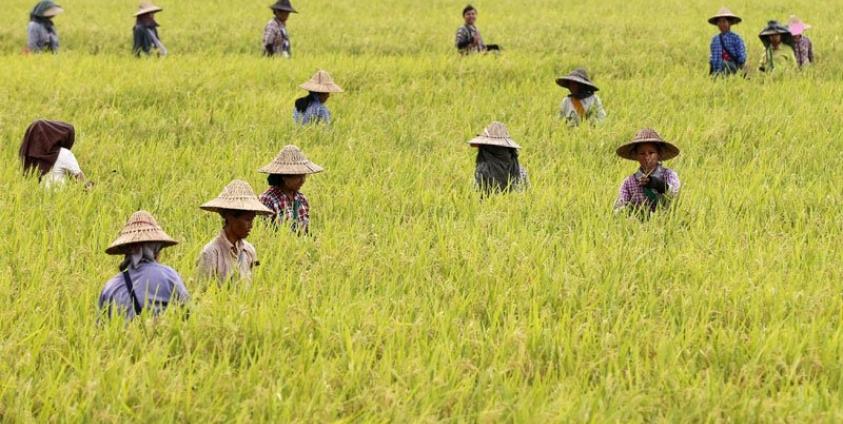Australia and Myanmar have developed their strategy of research collaboration in fisheries, livestock and cropping systems for the next ten years. They will continue the work started out with the program “MyFarm”, the Australian Ambassador Nicholas Coppel said during its showcase in Nay Pyi Taw on Saturday.
“We know that agriculture is the engine of Myanmar’s future”, he said. The agriculture, fisheries and livestock sectors account for about 30% of gross domestic product (GDP), and about 70% of the population depends on them for their livelihoods, Coppel highlighted.
Over the past five years, the multidisciplinary program “MyFarm” has been running in Myanmar. In Nay Pyi Taw teams from the five different projects presented their work and results for improving research and development of the country’s fisheries, the diversification and intensification of rice-based systems in lower Myanmar or increasing productivity of legume-based farming systems in the central dry zone.
Among other things they displayed how more than 7000 households are now using small-scale aquaculture technologies and that smallholders experienced an increase of up to 10% in production and income. Furthermore, 120 Village Seed Banks were established to produce and deliver over 40 tonnes of pulse seed in 57 township areas.
Australia, through the Australian Centre for International Agricultural Research, will continue its support for the agriculture, fisheries and livestock sectors through further investment and new research collaborations throughout 2017. For example, market analyses are planned so that the most impoverished food producers should get a better connection to the market and immigrate into the food chain of production.
Still, poverty is in Myanmar is twice as high in rural than in urban areas. “Farmers often do not generate sufficient income from their products to support the basic needs of their children, including good nutrition, decent shelter and quality education”, ambassador Coppel said. Because 85% of Myanmar’s poor people live in rural communities, the potential pro-growth in the agriculture, fisheries and livestock sectors is substantial for Myanmar, he clarified.
Besides different Australian Universities, the Yezin Agricultural University (YAU) in Myanmar has been involved in the projects of MyFarm. The YAU is Myanmar’s only university in agriculture. A challenge as its rector Myo Kywe told Mizzima is, “We have to expand in the future. Take for example the growing of coffee in the northern part of Myanmar. We should have a university nearby to do the research work.” Regarding the program MyFarm, he said: “The research into extension systems has highlighted how we can deliver the promise of technical research more effectively to farmers.”
After five years the program “MyFarm comes to close this year. Its geographic focus has been the Ayeyarwady Delta and the Central Dry Zone. Under the new strategy, Myanmar and Australia are considering expanding to a third area. Likely Shan state, because of its poverty, low productivity and lack of access to markets coincide.








